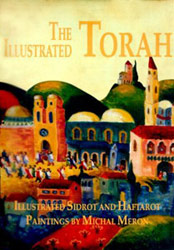In 1971, a plan for reconstructing the Roman Cardo was submitted by architects Peter Bogod, Esther Krendel and Shlomo Aronson. Their proposal relied heavily on the sixth century Madaba map, a mosaic map of Jerusalem found in 1897 in Madaba, Jordan. The Madaba Map clearly showed the Roman Cardo as the main artery through the Old City. Bogod, Krendel, and Aronson proposed the construction of a covered shopping arcade that would preserve the style of an ancient Roman street using contemporary materials. Their plan was based on the hope that archeologists would find remains of the southern end of the Cardo, an extension of the north-south Roman thoroughfare built during the Byzantine era (324 - 638).
Time was of the essence and mounting pressure to repopulate the Jewish Quarter led to the construction of a superstructure which allowed the residential buildings to be built while the archaeologists continued to work below. The project was 180 meters in total and was divided into eight sections to allow for construction teams to move quickly from one section to another depending on the needs of the archaeologists. By 1980, 37 housing units and 35 shops were built, incorporating archaeological finds such as a Hasmonean wall from the second century BCE and rows of Byzantine columns. The combination of old and new is also visible on the Street of the Jews, where the shops have been set into old vaults and the gallery is covered by an arched roof containing small apertures to allow for natural lighting.
Cross Hayehudim Street and enter the Cardo - the main colonnaded street of Byzantine Jerusalem depicted in many ancient maps of the city. The street, on which numerous shops operate today, incorporates the remains of the ancient street, which was exposed to a length of 180 meters. Recently, a candelabrum designed to resemble the one in the Temple was mounted there.
Time was of the essence and mounting pressure to repopulate the Jewish Quarter led to the construction of a superstructure which allowed the residential buildings to be built while the archaeologists continued to work below. The project was 180 meters in total and was divided into eight sections to allow for construction teams to move quickly from one section to another depending on the needs of the archaeologists. By 1980, 37 housing units and 35 shops were built, incorporating archaeological finds such as a Hasmonean wall from the second century BCE and rows of Byzantine columns. The combination of old and new is also visible on the Street of the Jews, where the shops have been set into old vaults and the gallery is covered by an arched roof containing small apertures to allow for natural lighting.
Cross Hayehudim Street and enter the Cardo - the main colonnaded street of Byzantine Jerusalem depicted in many ancient maps of the city. The street, on which numerous shops operate today, incorporates the remains of the ancient street, which was exposed to a length of 180 meters. Recently, a candelabrum designed to resemble the one in the Temple was mounted there.
Most Roman cities also had a Decumanus Maximus, an east-west street that served as a secondary main street. Due to varying geography, in some cities the decumanus is the main street and the cardo is secondary, but in general the cardo maximus served as the primary road. The Forum was normally located at the intersection of the Decumanus and the Cardo.
The cardo was the "hinge" or axis of the city, derived from the same root as cardinal.
The Jerusalem Cardo, in the Old City of Jerusalem is a good example. After the Jewish rebellion of 70 CE was crushed by Titus troops, Jerusalem was renamed Colonia Aelia Capitolina, and a long colonnaded Cardo was built, running across the city from north to south.
The cardo was the "hinge" or axis of the city, derived from the same root as cardinal.
The Jerusalem Cardo, in the Old City of Jerusalem is a good example. After the Jewish rebellion of 70 CE was crushed by Titus troops, Jerusalem was renamed Colonia Aelia Capitolina, and a long colonnaded Cardo was built, running across the city from north to south.
| • | Synagogues - A comprehensive listing of Jerusalem Synagogues, Jerusalem Shuls and Jerusalem Jewish Temples. |
| • | Churches - Complete guide to the Churches in Jerusalem, including photos. |
| • | Rent a car in Jerusalem |
| • | Yeshivas - A list of Yeshivas in Jerusalem |



Travel Partners
Advertisment: Judaica Gifts | Book your hotel in Jerusalem
Join the club. JerusalemPedia Club. Subscribe now

Navigation
Advertise Here
Jerusalem Cardo
The biggest Jerusalem content encyclopedia on the Internet. Jerusalempedia.com is a site that offers a full range of terms related to Jerusalem.
Our Mission is to create the most comprehensive and definitive source of information available on Jerusalem anywhere. We are in the process of compiling the world's most comprehensive source of inter-related encyclopedic information sources covering every subject of Jerusalem to our visitors.
Our Mission is to create the most comprehensive and definitive source of information available on Jerusalem anywhere. We are in the process of compiling the world's most comprehensive source of inter-related encyclopedic information sources covering every subject of Jerusalem to our visitors.
Easy Forex | Ayelet Frank Israeli Artist | Forex Trading | Jewish Celebration | Jewish United States | Rosh Hashanah Cards | Chanukah Greeting Cards | Haifa Real Estate | The Canadian Jewish News
Join the Club - Site Map - Advertise With Us - Contact Us - Links - Privacy Policy
JERUSALEMPEDIA.All Rights Reserved.
JERUSALEMPEDIA.All Rights Reserved.
What more information about Jerusalem Cardo? Log In

Jerusalem's Cardo Also known as Cardo Maximus
The Jerusalem Cardo is truly one of the most exciting and fascinating historical and archeological sites in Israel. Jerusalem Cardo or the cardo Jerusalem, was discovered many years ago by an Israeli archeologist who, together with his team of archeologists, determined that this historical site dated as far back as the 2nd century B.C.E. The word "Cardo" in Latin means "Heart" and this Cardo was the major marketplace during the Roman era.
The Jerusalem Cardo is truly one of the most exciting and fascinating historical and archeological sites in Israel. Jerusalem Cardo or the cardo Jerusalem, was discovered many years ago by an Israeli archeologist who, together with his team of archeologists, determined that this historical site dated as far back as the 2nd century B.C.E. The word "Cardo" in Latin means "Heart" and this Cardo was the major marketplace during the Roman era.
Cardo Maximus - This Roman road was the main north-south street in Jerusalem, and this part was uncovered in the Jewish Quarter. It was built during the reign of the emperor Justinian (527-565) as a continuation of the earlier, Roman, northern part, and linked the two main churches of Byzantine Jerusalem - the Holy Sepulcher and The Nea Church
Today, situated 20 feet below modern street level, one part of the Cardo is a restored arcade of Jewish galleries and shops, while the other part is an open-air reconstructed street.
Today, situated 20 feet below modern street level, one part of the Cardo is a restored arcade of Jewish galleries and shops, while the other part is an open-air reconstructed street.
Jerusalem Cardo in Roman city planning

List Price: US$60.00 Your Price: US$48.00 You save: 20%
Fully illustrated, colorful and attractive, and includes the weekly Torah portions and the Haftarot readings (weekly readings from the Writings and the Prophets).
Inside the Book
God said, "Let there be light"; and there was light.
Inside the Book
God said, "Let there be light"; and there was light.

The Illustrated Torah - Chumash (Five Books of Moses)
Jerusalem Cardo Maximus

Madaba map showing Roman Cardo in Jerusalem.
